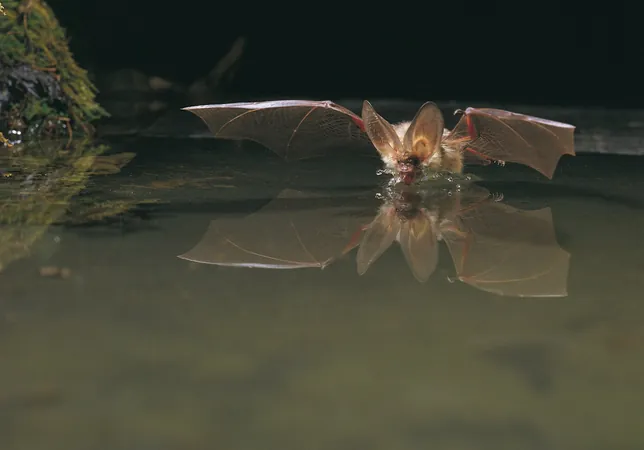
Shocking Discovery: Bat Mortality Rates at Swimming Pools Mirror Ancient Mass Deaths!
2024-10-31
Author: Li
In a groundbreaking new study published in Palaeobiodiversity and Palaeoenvironments, scientists have revealed that the death rates of bats in modern swimming pools are astonishingly similar to those seen in the ancient fossil site of Messel, which dates back 47 million years. With over 500 bat fossils uncovered at the Messel Pit UNESCO World Heritage Site, researchers are diving deep into the mysteries behind these ancient bat deaths.
At the heart of the investigation are two intriguing hypotheses that propose possible causes for the alarming mortality rates: the inhalation of toxic gases, like carbon dioxide, that may have built up above Lake Messel, or the presence of hazardous toxins from cyanobacteria in the water. However, data from contemporary instances of bats drowning in swimming pools suggest that the conditions at Messel could mirror those today.
This extensive study, led by researchers including PD Dr. Krister T. Smith from the Senckenberg Research Institute and Dr. Renate Rabenstein, determined that a significant number of the bat fossils belong to Palaeochiropteryx tupaiodon, a small bat species that exhibits remarkable similarities to modern bats. Smith emphasizes, "The sheer volume of well-preserved fossils—primarily complete skeletons along with some isolated wings and heads—raises critical questions about the causes of their demise."
To untangle the mystery of the high fossil count, the team embarked on a comprehensive analysis of bat mortality rates. They conducted an innovative online survey for swimming pool owners across the U.S., receiving nearly 500 responses that revealed a stark reality: many bats fall victim to accidental drowning in these artificial water bodies, seeking hydration in times of drought.
With the maximum recorded fatalities reaching 14 bats per year per pool, the researchers caution against a direct comparison to Lake Messel. Rather, they propose that the vast expanse of the Eocene-era lake, along with severe storm events, could have led to even higher bat mortality rates than those recorded in modern pools.
To further grasp the fossilization process, the team undertook unique experiments simulating drowning scenarios with recent bat specimens from the Frankfurt Zoo. "We wanted to understand the sinking dynamics of bat carcasses under different conditions," explains Rabenstein. The findings highlighted that carcasses filled with water sank more rapidly than those with air-filled lungs, underscoring the lake's depth as a key factor in the preservation of these ancient skeletons.
As researchers continue to explore the connection between past and present bat mortality, this study unveils a concerning ecological parallel: the vulnerability of bats, both in ancient ecosystems and today, amid changing environmental conditions. The shocking implications of this research urge us to reconsider our interactions with wildlife—and how something as innocent as a backyard swimming pool can become a death trap for these flying mammals.
Stay tuned for more updates as this fascinating story unfolds and grabs headlines across the world!





 Brasil (PT)
Brasil (PT)
 Canada (EN)
Canada (EN)
 Chile (ES)
Chile (ES)
 España (ES)
España (ES)
 France (FR)
France (FR)
 Hong Kong (EN)
Hong Kong (EN)
 Italia (IT)
Italia (IT)
 日本 (JA)
日本 (JA)
 Magyarország (HU)
Magyarország (HU)
 Norge (NO)
Norge (NO)
 Polska (PL)
Polska (PL)
 Schweiz (DE)
Schweiz (DE)
 Singapore (EN)
Singapore (EN)
 Sverige (SV)
Sverige (SV)
 Suomi (FI)
Suomi (FI)
 Türkiye (TR)
Türkiye (TR)